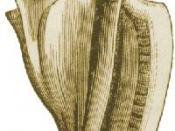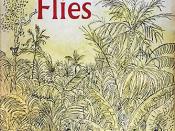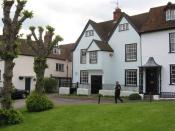Symbolism in Lord of the Flies To help his readers gain a better understanding of the message in his novel Lord of the Flies, William Golding uses the literary tool symbolism. He uses this tool liberally in two important areas, those being objects and people. This novel incorporates countless symbols, but this paper will discuss some of the most widely recognized ones, beginning with the objects.
Golding uses symbolic objects to convey his opinion of the necessity of structure for people to function in a group. Probably the most important object in the novel is the conch shell. The shell is found by Ralph on the beach shortly after the boys arrive on the island. The conch is described on page 16 as being colored "a deep cream, touched here and there with fading pink...covered with a delicate, embossed pattern." Ralph blows in one end of the shell emitting a "deep, harsh tone"(17) which lead the other boys to the beach for the first meeting.
This was the very first example of the power that the conch would come to have, and lose. The conch represents power and authority throughout the novel, because whoever holds the conch has the right to speak uninterrupted. However, as the boys' society decays, and the conch fades, becoming "fragile and white"(171), its power diminishes until it is finally crushed. With the intentional smashing of the conch, all order on the island is effectively lost.
The Lord of the Flies, a pig's head on a pike, one symbol in the novel for evil, or Satan. To Jack it was meant as a sacrifice to the "beast" which controlled the boys through fear. When Simon talked with the Lord of the Flies he learned what true evil was, it's "part of you, close, close, close!" The...


